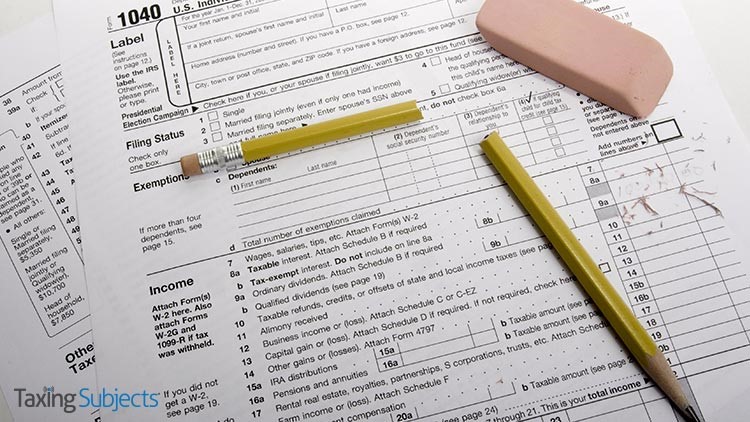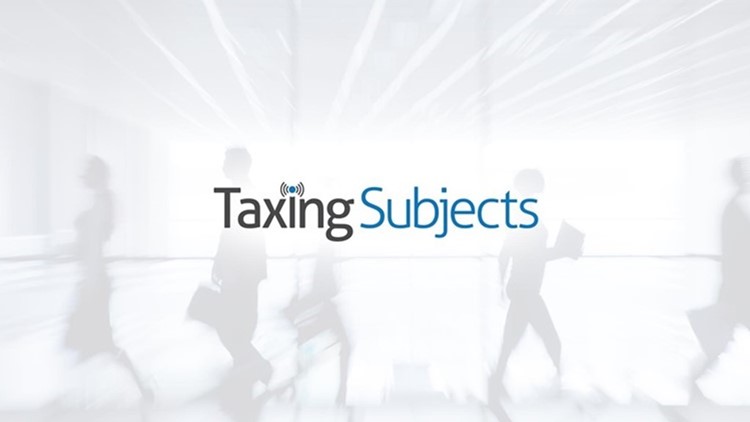by Socheata Ten EA, LLC | May 30, 2020 | Tax Tips and News
When can I e-file a Form 1040-X?
If you would prefer to electronically file the stack of Forms 1040-X sitting on your desk, the Internal Revenue Service has some good news. The IRS will be working with the tax software industry and developers, like Drake Software, to meet the agency’s “later this summer” target launch date. And, it turns out, this has been in the works for a while.
“Making the 1040-X an electronically filed form has been a goal of the IRS for a number of years,” the IRS said in the release. “It’s also been an ongoing request from the nation’s tax professional community and has been a continuing recommendation from the Internal Revenue Service Advisory Council (IRSAC) and Electronic Tax Administration Advisory Committee (ETAAC).”
Aside from speeding up the process of filing an amended return, the IRS noted that being able to e-file the 1040-X should result in improved customer service: “The new electronic filing option will provide the IRS with more complete and accurate data in an easily readable format to enable customer service representatives to answer taxpayers’ questions.”
That said, the IRS has an important caveat: e-File will initially only be available for tax year 2019 Forms 1040 and 1040-SR. Taxpayers amending different or older Forms 1040 will still need to put pen to paper.
Will you be able to e-file all state amended returns?
We asked the Drake Software State Tax Development Division if any states were going to add support for amended e-file next year. “I haven’t yet heard if any states will be adding amended e-file for the upcoming year, though many already do,” explained Rod Smith, one of Drake Software’s State Development Managers. “With most states allowing unlinked returns—meaning there is no corresponding accepted federal return ‘linked’ to the state return—the federal 1040-X not being e-fileable is not necessarily a hinderance for them from a technical standpoint.”
State Development Managers Lacey Crowe, Casey Schulte, and Ramona Hodor echoed Rod’s sentiments, citing around two dozen states that already supported amended e-file, like California, New York, North Carolina, Ohio, and Virginia. While the team had not yet heard about more states joining the list next filing season, Rod noted that states—in general—had been steadily adding support for amended e-file.
Source: IR-2020-107
– Story provided by TaxingSubjects.com
by Socheata Ten EA, LLC | May 29, 2020 | Tax Tips and News
The Internal Revenue Service has issued rules and guidance covering two disparate tax areas: renewable energy and retirement payments.
New rules give relief for taxpayers developing renewable energy projects and producing energy through renewable means. The IRS also issued proposed regulations that update the tax withholding rules for periodic retirement and annuity payments made after Dec. 31, 2020.
There will be a bigger window on renewable energy.
The new relief measures help not only those who develop renewable energy projects but those who use renewable strategies to produce electricity. The acceptable sources include wind, biomass, landfill gas, trash, and hydropower. There’s also a safe harbor for taxpayers using solar panels, fuel cells, micro-turbines and combined heat-and-power systems.
This latest guidance is spelled out in Notice 2020-41.
The IRS admits that the effects of the COVID-19 pandemic has caused delays in the supply chain for the components that are needed to complete renewable energy projects that would otherwise be eligible for important tax credits.
For certain projects that began construction in 2016 or 2017, Notice 2020-41 adds an extra year to the four-year “Continuity Safe Harbor” provided in existing guidance. If these projects are placed in service within five years construction will be considered to be continuous.
Notice 2020-41 also provides a measure of comfort for those taxpayers who started construction and incurred at least 5% of the project costs and made payments for services or property that was expected to be delivered within 3 1/2 months. the IRS now considers these taxpayers to be considered “incurred” under economic performance rules.
The notice says if the services or property are received by Oct. 15, 2020, the taxpayer’s expectations at the time of the 2019 payment are considered reasonable.
IRS documents say these changes were all made necessary by the pandemic.
“Extending the Continuity Safe Harbor and providing a 3½ Month Safe Harbor will provide flexibility for taxpayers to satisfy the beginning of construction requirements and limit the impact of COVID-19-related delays on the ability to claim tax credits,” the IRS writes.
What are the new rules for payments?
Accounting Today reports that the IRS and the Treasury Department have also proposed new regulations updating income tax withholding rules for periodic retirement and annuity payments made after Dec. 31, 2020.
The rules for withholding on these kinds of payments were set up for change by the Tax Cuts and Jobs Act in 2017.
Before that time, if no withholding certificate was in effect for a taxpayer’s periodic retirement and annuity payments, withholding was determined by treating the taxpayer as a married individual claiming three withholding exemptions.
The 2017 tax reform measure changed that, saying instead that when no certificate was present, rules set out by Treasury would be the determining factor. But that hasn’t been as simple as it sounds.
The IRS issued Notice 2020-3 earlier this year that basically said the default rate of withholding on periodic payments with no certificate present would continue to be based on that of a married taxpayer with three exemptions.
Now, Accounting Today reports, this new proposal means another iteration of regulations will once again be coming from the IRS and Treasury for 2021 and beyond. The rules and procedures will hopefully determine the default rate of withholding on periodic payments when a taxpayer has no withholding certificate.
Accounting Today, though, advises that more rule changes may yet be on the horizon. Most of the individual tax provisions of the Tax Cuts and Jobs Act will expire in 2025.
– Story provided by TaxingSubjects.com
by Socheata Ten EA, LLC | May 28, 2020 | Tax Tips and News
When the Internal Revenue Service moved the 2020 deadline for filing individual income tax returns from April 15 to July 15, it apparently also gave millions of taxpayers a green light to wait until the last minute to file their taxes.
CNBC reports that the IRS is behind last year’s number by almost 9.5%, with 128 million individual returns filed so far in 2020 compared to 141.5 million filed by this time last year. The network reports the number of refunds also lags behind last year’s levels, down nearly 14%.
Refund amounts, however, are up, with the average refund putting $2,779 in the bank — up some $50 from 2019.
Are taxpayers working the system?
Tax professionals don’t seem all that surprised that taxpayers are taking advantage of a much larger window to file and pay their taxes.
“Part of it is people taking advantage of the July 15 deadline, and I bet some of that has to do with CPA firms as well,” said Matt Rosenberg, CPA and member of the American Institute of CPAs’ Financial Literacy Commission.
But Rosenburg sounded a cautionary note to CNBC, saying it’s a much smarter idea to take stock of your tax situation now while there’s still time.
“It’s nice to have the extra time, but I still encourage people to calculate their tax liability right now,” Rosenberg said. “If you’re able to claim a refund, you can take it. If you owe, you have an opportunity to budget and pay for it.”
What are strategies for the extra time to file?
CNBC has a few ideas on what taxpayers can do to improve their tax picture while waiting for the July 15 deadline:
- Put away more savings if they can. Taxpayers have until July 15 to save up to $6,000 in an IRA and have the contributions count for 2019. If the taxpayer is 50 or over, the limit is $7,000.
- Put more money into an HSA and have it count for 2019. Taxpayers can save on a tax-deductible or pre-tax basis in an HSA and have the cash grow tax-free. Money withdrawn to pay for qualified medical costs come out tax-free. (CAUTION: Taxpayers can only fund an HSA if they have a high-deductible health plan.)
- Search for additional deductions and credits. Taxpayers can look over their statements to see if they qualify for tax extenders — tax breaks that have to be renewed by lawmakers every year.
- Know your state date. While most states have also pushed their tax-filing deadlines back, not all of them have. The American Institute of CPAs has a handy list of states and their deadlines.
Finally, CNBC advises not to play games with taxes. If you have the money to pay your 2019 tax bill, you’re better off just doing it. Taxpayers who invest the money that could be better used paying their tax due are walking a razor’s edge.
“Investing the money if you don’t have to pay it right away is risky,” Rosenberg said. “The rate of return you get is low on anything that’s safe and probably isn’t even worth the headache.”
Our thanks to CNBC and reporter Darla Mercado for the original article.
– Story provided by TaxingSubjects.com
by Socheata Ten EA, LLC | May 23, 2020 | Tax Tips and News
The Treasury Department has issued an additional $41 billion in Economic Impact Payments since May 8, 2020.
The Internal Revenue Service announced the latest Economic Impact Payment statistics in a Friday press release. To provide a clear picture of how the $257 billion in payments has been distributed, the agency updated its recent state-by-state breakdown. In an accompanying statement, IRS Commissioner Chuck Rettig said that this data highlights the agencies’ ability respond quickly during a crisis.
Rettig also noted that some non-filers may still need to report qualifying information to the IRS: “We also continue to urge those who don’t normally have a filing requirement, including those with little or no income, that they can quickly register for the payments on IRS.gov.” Specifically, non-filers who don’t receive Railroad Retirement, Social Security, Survivor or Disability, Supplemental Security Income, or Veterans Affairs benefits can use the Non-Filers: Enter Payment Info Here tool to ensure they receive a payment.
Which state received the most Economic Impact Payments?
California ($27 billion), Texas ($21 billion), Florida ($17 billion), New York ($15 billion), and Pennsylvania ($10 billion) are the states that have received the most money from Economic Impact Payments, while South Dakota ($759 million), North Dakota ($632 million), Alaska ($580 million), Vermont ($555 million), and Wyoming ($488 million) have received the fewest payments.
Since the number of EIPs issued by the Treasury neatly maps onto the number of residents in each state, we added a column to the IRS chart containing estimated 2019 population data from the US Census Bureau. To make it easier to read, we sorted the data by the number of payments issued:
| State |
2019 Estimated Population |
Economic Impact Payments Issued |
Amount Paid by Treasury |
| California |
39,512,223 |
16,869,636 |
$27,897,283,972 |
| Texas |
28,995,881 |
12,396,590 |
$21,635,810,592 |
| Florida |
21,477,737 |
10,618,792 |
$17,546,164,251 |
| New York |
19,453,561 |
9,341,632 |
$15,034,060,259 |
| Pennsylvania |
12,801,989 |
6,258,107 |
$10,596,406,088 |
| Ohio |
11,689,100 |
5,828,477 |
$9,833,041,489 |
| Illinois |
12,671,821 |
5,729,351 |
$9,630,495,809 |
| North Carolina |
10,488,084 |
4,820,974 |
$8,264,415,092 |
| Michigan |
9,986,857 |
4,813,156 |
$8,286,614,929 |
| Georgia |
10,617,423 |
4,763,109 |
$8,081,253,826 |
| New Jersey |
8,882,190 |
3,955,396 |
$6,507,621,505 |
| Virginia |
8,535,519 |
3,796,975 |
$6,447,589,217 |
| Washington |
7,614,893 |
3,453,810 |
$5,876,091,642 |
| Tennessee |
6,829,174 |
3,305,606 |
$5,693,071,645 |
| Arizona |
7,278,717 |
3,242,043 |
$5,573,167,261 |
| Indiana |
6,732,219 |
3,174,698 |
$5,613,824,661 |
| Massachusetts |
6,892,503 |
3,136,787 |
$5,028,963,151 |
| Missouri |
6,137,428 |
2,933,973 |
$5,118,911,639 |
| Wisconsin |
5,822,434 |
2,817,912 |
$4,948,382,340 |
| Maryland |
6,045,680 |
2,692,062 |
$4,380,831,484 |
| Minnesota |
5,639,632 |
2,613,771 |
$4,577,086,990 |
| Colorado |
5,758,736 |
2,605,089 |
$4,407,408,401 |
| South Carolina |
5,148,714 |
2,443,864 |
$4,174,979,940 |
| Alabama |
4,903,185 |
2,332,771 |
$3,988,469,624 |
| Kentucky |
4,467,673 |
2,199,370 |
$3,824,826,391 |
| Louisiana |
4,648,794 |
2,186,332 |
$3,680,836,165 |
| Oregon |
4,217,737 |
2,031,861 |
$3,425,278,483 |
| Oklahoma |
3,956,971 |
1,799,803 |
$3,190,860,867 |
| Connecticut |
3,565,287 |
1,601,397 |
$2,609,644,445 |
| Nevada |
3,080,156 |
1,496,510 |
$2,484,078,422 |
| Iowa |
3,155,070 |
1,477,214 |
$2,660,402,672 |
| Arkansas |
3,017,804 |
1,428,624 |
$2,496,524,966 |
| Mississippi |
2,976,149 |
1,427,440 |
$2,422,655,854 |
| Kansas |
2,913,314 |
1,310,151 |
$2,359,448,490 |
| Utah |
3,205,958 |
1,287,162 |
$2,494,199,291 |
| New Mexico |
2,096,829 |
997,072 |
$1,684,917,178 |
| West Virginia |
1,792,147 |
913,264 |
$1,578,210,674 |
| Nebraska |
1,934,408 |
887,877 |
$1,611,581,538 |
| Idaho |
1,787,065 |
808,118 |
$1,512,453,150 |
| Foreign Addresses |
N/A |
748,724 |
$1,222,795,510 |
| Maine |
1,344,212 |
714,941 |
$1,215,239,330 |
| Hawaii |
1,415,872 |
691,424 |
$1,179,264,436 |
| New Hampshire |
1,359,711 |
676,004 |
$1,139,776,925 |
| Rhode Island |
1,059,361 |
536,218 |
$869,615,684 |
| Montana |
1,068,778 |
527,902 |
$932,003,084 |
| Delaware |
973,764 |
463,653 |
$778,262,906 |
| South Dakota |
884,659 |
416,962 |
$759,483,658 |
| North Dakota |
762,062 |
354,768 |
$632,983,746 |
| Alaska |
731,545 |
333,429 |
$580,774,111 |
| Vermont |
623,989 |
327,867 |
$555,841,287 |
| District of Columbia |
705,749 |
308,306 |
$421,734,460 |
| Wyoming |
578,759 |
270,626 |
$488,905,666 |
| TOTALS |
328,239,523 |
152,167,600 |
$257,954,545,196 |
Sources: IR-2020-101; State Population Totals and Components of Change: 2010-2019
– Story provided by TaxingSubjects.com
by Socheata Ten EA, LLC | May 22, 2020 | Tax Tips and News
Five Connecticut men have been indicted in a series of fraud schemes that targeted the elderly, bilking them out of more than $4 million. The five men were indicted by a federal grand jury on 11 counts for their alleged participation in lottery and romance scams.
The indictment includes charges of conspiracy to commit mail and wire fraud, mail fraud, conspiracy to commit money laundering, and money laundering.
They had dreams of love or money.
The alleged ring had two frauds they used to scam their victims out of money. One involved convincing the victim that he or she had won a lottery, but needed to pay fees for taxes, shipping and processing in order to claim the prize. In such schemes, once a victim sends a small amount of money, the scammer asks for larger sums with a promise of more winnings. The victims, however, never receive any winnings.
In a romance scam, scammers take advantage of people looking for companionship by pretending to be prospective companions. Scammers create fake online profiles on dating websites that include false personal details. Once they gain the victim’s trust, the scammers ask the victims for money, falsely claiming to need money for medical or business emergencies, for travel to see the victim, or for other purposes.
Prosecutors say the scams started in 2015 and ran until federal officers descended on their operation in March of 2020. While it’s alleged that the conspiracy defrauded numerous victims across the country of more than $4 million, one Connecticut victim alone lost more than $1 million.
“The financial victimization of seniors is as reprehensible as it is cruel, and the Justice Department has made it a priority to root out those who commit these crimes,” said U.S. Attorney John Durham. “Numerous victims in this scheme gave thousands of dollars to these alleged predators. I urge all to think twice, and then to think again, before providing any money to individuals who they have never met in person. As soon as you are asked for money, call your local police department, or 833-FRAUD-11, for assistance.”
Durham says members of the alleged fraud ring were identified as:
- Farouk Fasasi, 25, of New Haven, Conn.
- Rodney Thomas Jr., 29, of New Haven, Conn.
- Montrell Dobbs Jr., 27, of New Haven, Conn.
- Ralph Pierre, 30, of New Haven, Conn.
- Stanley Pierre, 32, of Bridgeport, Conn.
Officers arrested Fasasi, Thomas, Dobbs and Ralph Pierre shortly after the indictment was handed down in March. At that time, Stanley Pierre was still being sought by law enforcement officers. Federal officials say Stanley Pierre later turned himself in and is currently out on $100,000 bond.
Fasasi, Thomas and Ralph Pierre were ordered jailed after their arrest; Dobbs also was released on bond.
Fasasi is a Nigerian citizen who is in the U.S. legally as a permanent resident.
The case was investigated by the U.S. Postal Inspection Service, Treasury Inspector General for Tax Administration (TIGTA), U.S. Immigration and Customs Enforcement’s Homeland Security Investigations (HSI), U.S. Secret Service, U.S. Army-CID, and New Haven Police Department.
J. Russell George, the Treasury Inspector General for Tax Administration, said the indictment of the five men was due to excellent teamwork by law enforcement.
“These charges demonstrate the commitment of the Treasury Inspector General for Tax Administration to investigate and bring to justice those that victimize the American taxpayer,” George said. “These defendants are alleged to have engaged in schemes resulting in millions of dollars in fraud, often targeting the most vulnerable members of society. The success of this investigation is the result of a collaborative effort between multiple federal law enforcement agencies and the dedicated staff at the U.S. Attorney’s Office.”
– Story provided by TaxingSubjects.com






 Socheata Ten EA, LLC
Socheata Ten EA, LLC